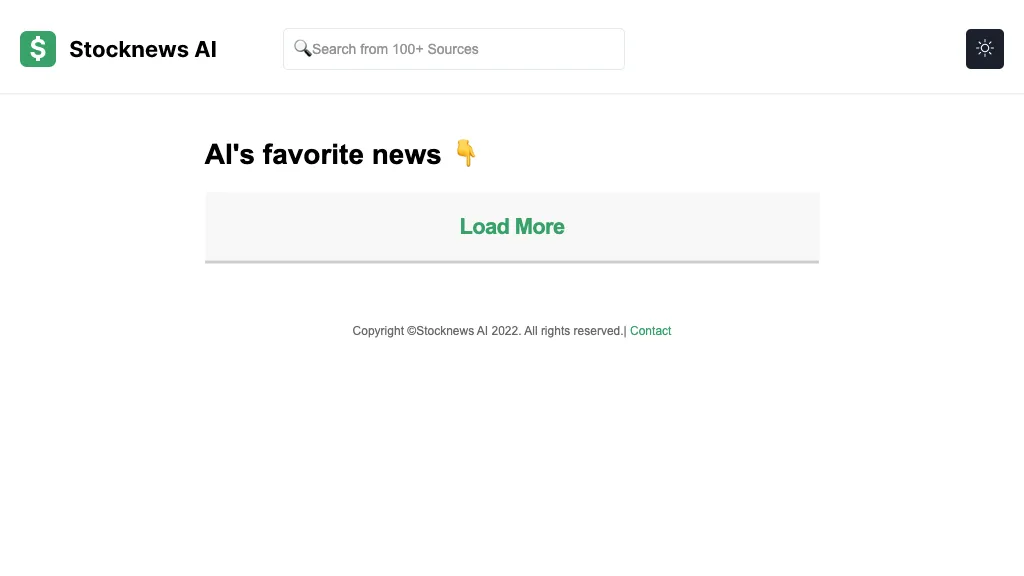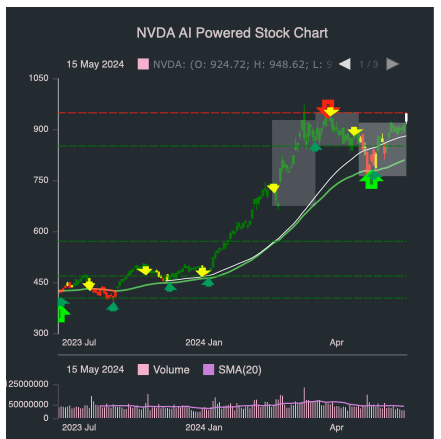Top 10 Suggestions To Determine The Integration And Compatibility Of Ai-Based Stock Forecasting And Trading Platforms
AI stock trading platforms that can predict and analyze stocks based on AI must have compatibility with one another. An integrated platform that is seamless with your current tools and systems as well as workflows will significantly increase efficiency and productivity. Here are 10 top ways to evaluate the compatibility and integration of these platforms.
1. Check Brokerage Integration
Check that your platform works seamlessly with the brokerage or trading service you prefer.
Trade execution: Find out whether your platform permits you to make trades directly through an integrated broker.
Account synchronization - Examine to see if your platform is capable of syncing account balances, transactions, and positions in real time.
2. Check API Availability
API access: Verify whether the platform provides an API available to developers who are looking to automatize workflows or create customized tools.
API documentation - Verify that the API's examples and usage examples are well-documented.
Rate limits: Determine whether the API has acceptable rate limits and is able to handle your anticipated usage volume.
3. Assessment of Integration Tools from Third Parties
Popular tools: Make sure that the platform can be integrated with other tools such as Excel or Google Sheets.
Data export and import: Ensure that your platform supports easy export/import of data from and into other tools.
Extensions/Plugins: Check if the platform is compatible with extensions or plugins for further functionality.
4. Test Compatibility Operating Systems
Desktop compatibility is important. Check that your device works on the operating system you prefer (Windows MacOS Linux).
Mobile compatibility Check if the platform has apps for iOS or Android.
Web-based access (for additional flexibility): Verify that the platform is accessible via an internet browser.
5. Analyze Data Integration Capabilities
Data sources - Ensure that the platform can be integrated with different sources of data (e.g. news feeds or market data, and sentiments on social media).
Real-time Data Feeds Look to determine if your application offers real-time analysis.
Historical data import - Make sure that the platform allows you to import historical data into your backtesting or analysis software.
6. Assess cloud and On-Premise Compatible
Cloud-based platforms: Ensure the platform is accessible from anywhere with an internet connection.
On-premises Solutions: If your would rather deploy on premises, make sure the platform you choose to use is compatible.
Hybrid models: Find out whether the platform is cloud-based and on-premise capabilities.
7. Verify Cross Platform Synchronization
Device synchronization. Check that the platform is synchronized to transfer settings and data between the devices (desktops/laptops/mobiles/tablets).
Verify whether changes made on one device reflect on another.
Access to offline data: Determine if your platform offers restricted functionality and access to data while offline.
8. Make sure that the trading strategies are compatible. strategies.
Automated trading strategies or algorithmic ought to be supported by the trading platform.
Custom indicators: Determine if you can use custom indicators or scripts.
Strategy backtesting: Determine whether the platform is capable of testing trading strategies back using historical data.
9. Review Security and Compliance
Data encryption - Make sure that your platform is using encryption for all data both during transit and when it is in rest.
Validation: Find out if the platform has safe authentication methods for example, two-factor authentication.
Regulatory compliance: Verify that the platform complies to the relevant laws (e.g. GDPR, FINRA or SEC).
10. Test Scalability and Performance
Scalability: Ensure that the platform can handle growing amounts of users and data as the demands of your business increase.
Performance during load: Verify whether the platform is responsive under high-volatility conditions.
Utilization of resources: Make sure that the system is using resources effectively (CPUs and memory).
Bonus Tips
Customer feedback: Read user reviews and testimonials in order to determine the integration capabilities of the platform.
Trial period: Use an unpaid trial or demo to try the integration of the platform with your existing tools and workflows.
Customer Support: The platform should provide a solid support service when it comes to integration issues.
These tips will help you evaluate the compatibility and seamless integration of AI trading platforms that predict/analyze price of stocks. They will also enhance your trading performance. Follow the top his comment is here about ai stock picker for more recommendations including ai investing platform, stock ai, market ai, using ai to trade stocks, best ai trading software, ai for trading, ai stock trading bot free, ai for stock trading, trading with ai, trading ai and more.

Top 10 Tips On Assessing The Transparency Of Ai Stock Predicting/Analyzing Trading Platforms
Transparency can be an important factor in evaluating AI trading and stock predictions platforms. It ensures that users can be confident in the operation of the platform and understand how decisions are made, and verify the accuracy of the predictions. These are the 10 best methods to assess the degree of transparency that these platforms offer.
1. The AI Models are explained in clear terms
TIP: Make sure the platform explains clearly the AI models and algorithms used to make predictions.
The reason: Understanding the basic technology allows users to assess its reliability and limitations.
2. Disclosure of Data Source
Tip: Make sure the platform discloses the data sources that it draws from.
What is the benefit of knowing the sources of information, you can ensure that the platform uses accurate and complete information.
3. Performance Metrics and Backtesting Results
Tip Look for transparent reports of performance metrics.
This will enable users to check the effectiveness of the platform and also its past performance.
4. Actual-Time Updates and Notifications
Tip - Check to see if there are real-time notifications, updates, and trades on the platform.
What is the reason: Realtime transparency gives users constant information about critical actions.
5. Limitations of Communication that is open
Tip: Make sure the platform discusses openly the potential risks and drawbacks of its trading strategies as well as forecasts.
Why? Acknowledging limitations can help build trust, and allows users to make educated decisions.
6. Users can get access to raw data
Tip: Check if users are able to access raw data, or the intermediate results AI models utilize.
The reason: The raw data are available to anyone who wants to conduct their own analysis.
7. Transparency of Costs and Fees
Make sure the platform clearly outlines all fees for subscriptions and any hidden charges.
Transparent pricing creates trust and helps avoid surprises.
8. Regularly scheduled report and audits
Check to see if there are regular reports from the platform or if external auditors from third parties verify the platform's operation and its performance.
Why independent verification enhances credibility and accountability
9. Explanability of Predictions
Tips: Make sure the platform offers information about how recommendations or predictions (e.g. importance of feature, decision tree) are made.
Why Explainability is a tool that assists users in understanding AI-driven decision making.
10. Feedback and Support Channels for Users
Tip: Check whether the platform offers open channels to get feedback from its users and provides assistance. Also, you should determine if it addresses user concerns in a clear and transparent manner.
Why: Responsiveness in communication is a sign of commitment to openness.
Bonus Tips - Regulatory Compliance
Verify that the platform adheres to relevant financial regulations and declares its conformity status. It will increase the transparency and credibility.
It is possible to evaluate these factors to find out whether the AI stock trading and prediction platform is a transparent, and make an informed decision. This will enable you to build confidence and faith in the abilities of the platform. Have a look at the most popular stock trading ai url for more info including ai stock prediction, ai stock trader, ai tools for trading, ai for trading stocks, how to use ai for copyright trading, ai share trading, chart analysis ai, best ai trading platform, ai in stock market, chart ai trading and more.

Comments on “20 New News To Choosing AI Stock Picker Analysis Sites”